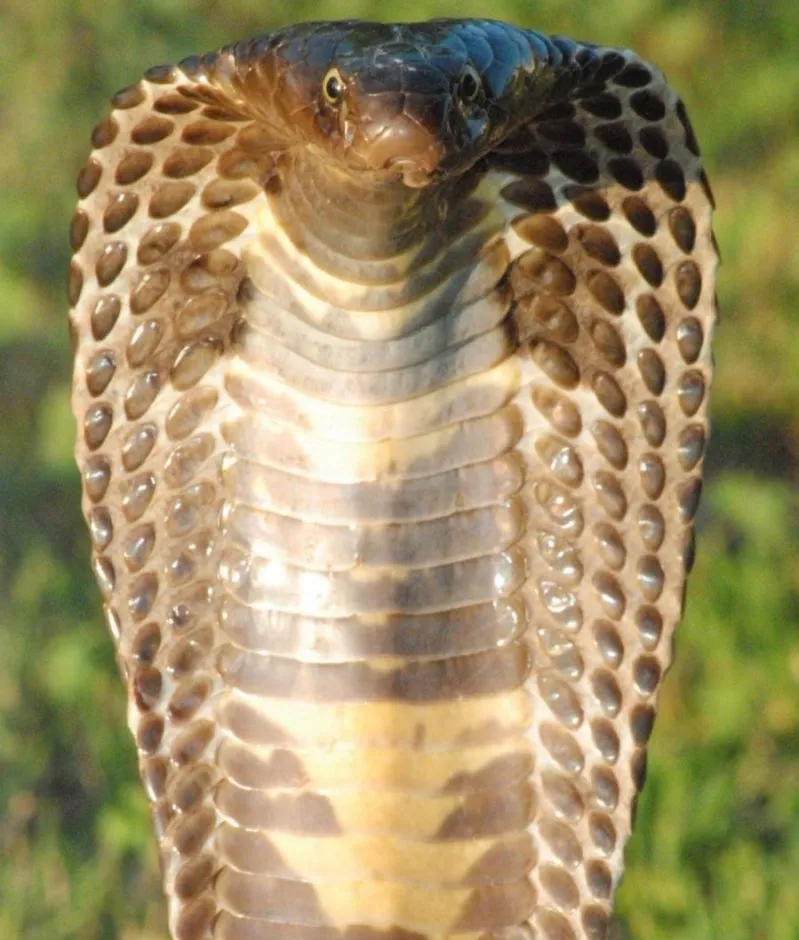Snake venom can pack a serious punch. It contains neurotoxins (nerve-attacking chemicals) that can kill small mammals in minutes– including other snakes. Yet some species of snake survive bites that are deadly to others, even from their own species.
Now, a studyfrom researchers at the University of Queensland, Australia reveals that this phenomenon results fromgenetic changes in nerve cell receptors. These genetic mutations allow certain species, such as the Burmese pythons, mole snakes, and the southern stiletto snake, to repel a particular neurotoxin found in snake venom.
Professor Bryan Fry and PhD student Richard Harris have identified the exact mutation and explained its protective powers. They found that changes at this genetic level mean receptor cells carry the same electrical charge as the venom. As a result, when the venom tries to attack the cells it is repelled, just like trying to bring two positive ends of a magnet together.
A single gene mutation allows vulnerable snakes to develop resistance against these particular toxins, called alpha-neurotoxins. In fact, the team observed this mutation in the predator snakes too, creating ‘autoresistance’ to protect them from their own deadly venom.
Snakes like cobras and kraitsthat prey on other snakes evolved their venom such that the alpha-neurotoxins have positively charged surface sites (active areason the molecule's surface). Such sites enable the venom to bind with particular target nerves with negatively charged receptors, like bringing opposite sides of magnets together. This is an attractive interaction, and by binding the venom paralyses the snakes’ prey.

However, some sneaky snakes such as the Burmese python, have since evolved genetic mutations to escape this type of interaction. They have switched the amino acid of their target receptor from negatively to positively charged. As a result, the interaction with alpha-neurotoxins becomes repulsive, deterring the venom rather than binding.
“It's an inventive genetic mutation and it's been completely missed until now. You have two positive charges coming close to each other, it's like holding the same side of magnets to each other,” said Fry.
“So we searched through sequences and sure enough, there was that same repulsive effect in other species. And this all came from the fact that we had this incredible technology.”
The discovery was made possible by developing artificial nerves, both with and without these genetic mutations, to observe their interactions with venoms. The team uses cutting-edge biosensors which can measure almost any interactions between molecules.With this, they observed a ‘synergistic effect’, wherein resistance was enhanced by charge reversal of two sites together. This lowers the vulnerability to alpha-neurotoxin by creating a stronger repulsive charge interaction.
“That was one thing we didn’t expect – this synergistic effect was quite a surprise when looking at the data. But it makes sense, it’s basically pulling the charges to amplify the resistance. We’ve only just hit upon this, so it’s definitely an area to further test,” said Harris.
However amplified this resistance is, the predator’s venom will probably adapt again. Nerve receptors have many sites of interactions and therefore many potential binding sites for toxins. Harris says he is also looking at other neurotoxins that seem to bind to a different part of the receptor, thereby finding their way around this particular type of resistance.
“Every benefit comes with a tax – a fitness disadvantage that explains why not every species develops this resistance. If they are not at extreme risk, this genetic mutation may do more harm than help,” Fry added.
From further investigating synergistic interactions to exploring completely new neurotoxins, Fry says that with the biosensor technology, the team's research is really only limited by their imagination.
Reader Q&A: How do snakes produce their venom?
Asked by: Richard Wainsley, King's Lynn
Snake venom is made by organs that evolved from salivary glands. Ordinary saliva contains enzymes to help digest food as you chew it and natural selection has favoured snakes that include ever more toxic enzymes in their saliva.
Scientists at Bangor University recently sequenced the genome of the king cobra and found that the toxins in its venom are slight variations of ordinary proteins. As prey gradually evolved immunity, so snakes have responded with a complex mix of 50-100 different proteins to alter blood pressure, prevent blood clotting and paralyse nerves.
Read more:
